Pearl Jam’s been on quite a ride since they introduced themselves to the world in 1991. They solidified grunge rock, created a number of hits that need no introduction, and perfected the arena rock experience. All the while, they’ve been releasing albums, the 11th of which is Gigaton, which comes out March 27.
To celebrate, I’m ranking all 10 current Pearl Jam albums. Hopefully along the way I’ll give you a reason why each album is special in its own way, and worth revisiting.
HONORABLE MENTIONS
Lost Dogs (2003)
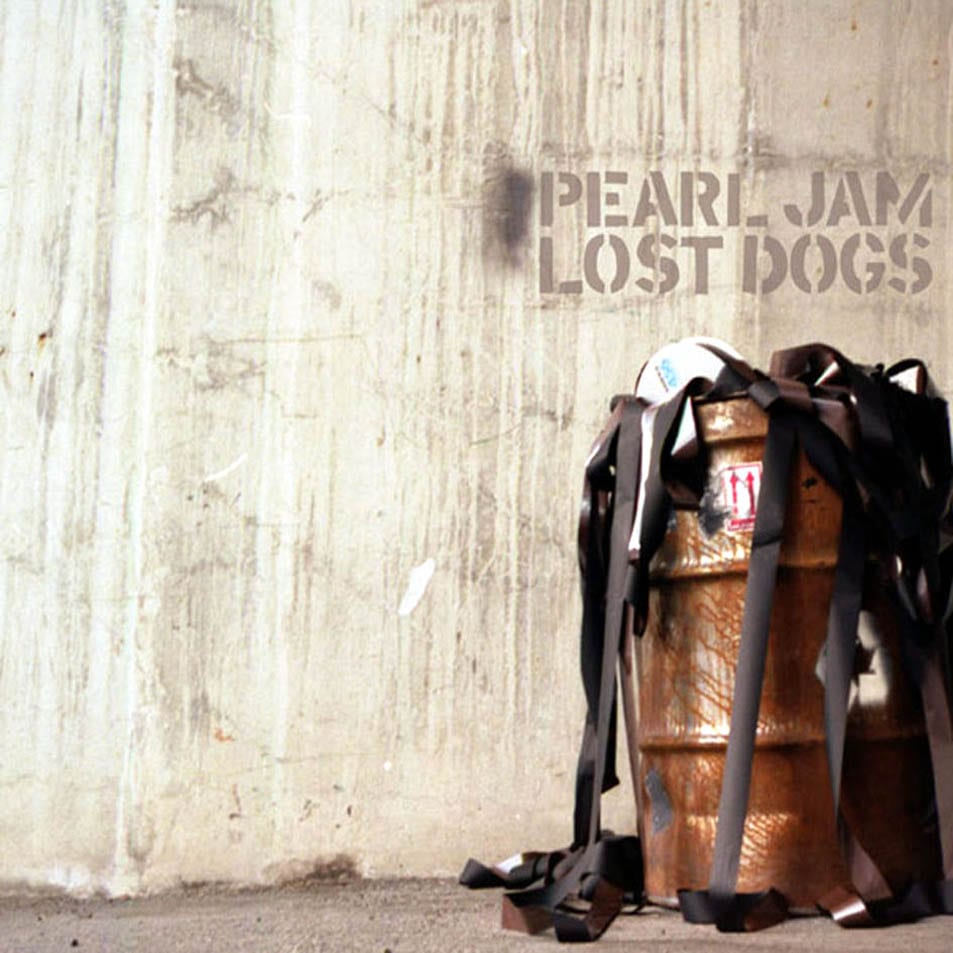 This compilation album came out almost one year to the day after Riot Act. It’s a two-disk set of B-sides and non-album releases during their first seven albums. The songs fall into these categories:
This compilation album came out almost one year to the day after Riot Act. It’s a two-disk set of B-sides and non-album releases during their first seven albums. The songs fall into these categories:
- Rare songs previously only available on the Fan Club Christmas Singles
- Released as singles independent of albums, like “Last Kiss”
- Not in the style of the nearest album, like the fun blatantly surf rock song “Gremmie Out Of Control” or the hidden track “04/20/02,” a sparse heartfelt tribute to Alice In Chains’ Layne Staley
- Not as memorable as songs that made the albums
- Or is “Yellow Ledbetter,” which charted just as highly as any other song on Ten but was legendary because until this collection you could only find it as the B-side to the “Jeremy” single. Therefore it was not only high quality, it was immediately rare.
It’s an uneven and massive collection, but its highs are way up there, more than making up for any songs you may consider less than stellar. “Yellow Ledbetter” makes this an essential album all by itself, but happily there are many more great reasons to have this in your collection.
Merkin Ball (1995)
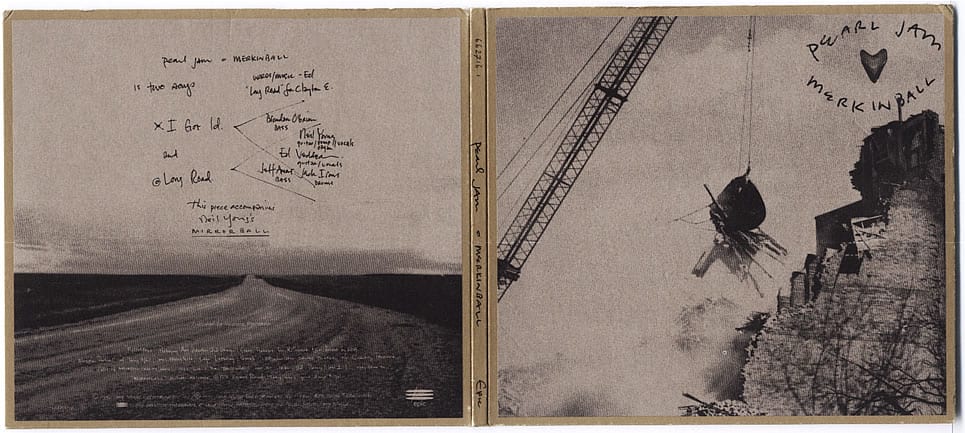 Released between Vitalogy and No Code, these songs could’ve fit in perfectly a few years later on Yield. Yet this is a two-track companion EP to Neil Young’s Mirror Ball.
Released between Vitalogy and No Code, these songs could’ve fit in perfectly a few years later on Yield. Yet this is a two-track companion EP to Neil Young’s Mirror Ball.
Yes, that means Neil Young is part of these songs. He and Pearl Jam make one hell of a team-up, and these two tracks prove half of it. Their 1993 MTV appearance proves the rest.
THE ALBUMS
10. Backspacer (2009)
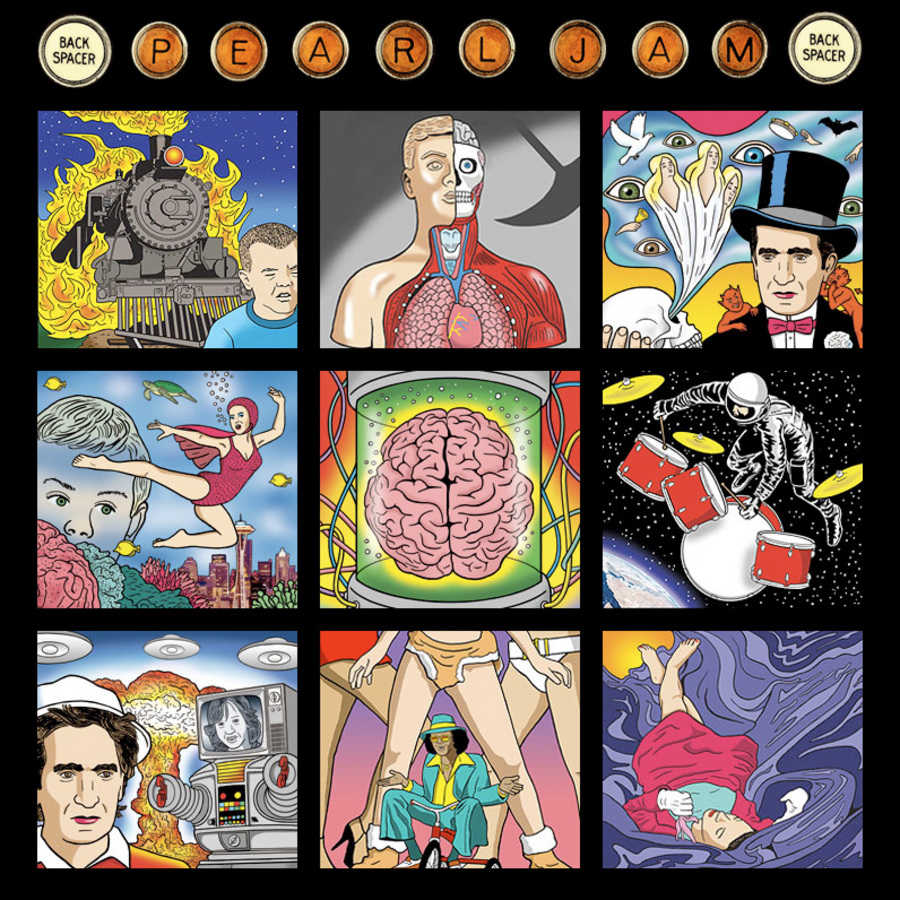
Backspacer is Pearl Jam’s easiest album to digest musically. Despite having mostly up-tempo stuff, it felt like the band’s urgency took its foot off the gas. Optimism due to Obama’s election, despite the aftermath of the 2008 recession? Per Eddie Vedder, that answer is yes.
As a result, there’s a loose, calmer energy that ends up feeling like less energy. They either needed more energy or more structural cohesion to make the album feel tight enough for the final draft feeling that Lightning Bolt nailed.
“The Fixer” is the one fast song that made it to the radio, but the ballad “Just Breathe” did even better for them. “Just Breathe” has great lyrics and the melody is solid, but it could’ve been a hair band ballad for pretty much anyone in the late ’80s too.
Besides the singles, I’d check out “Force of Nature.” It’s the one that sounds most like it has that finished feeling.
9. Binaural (2000)
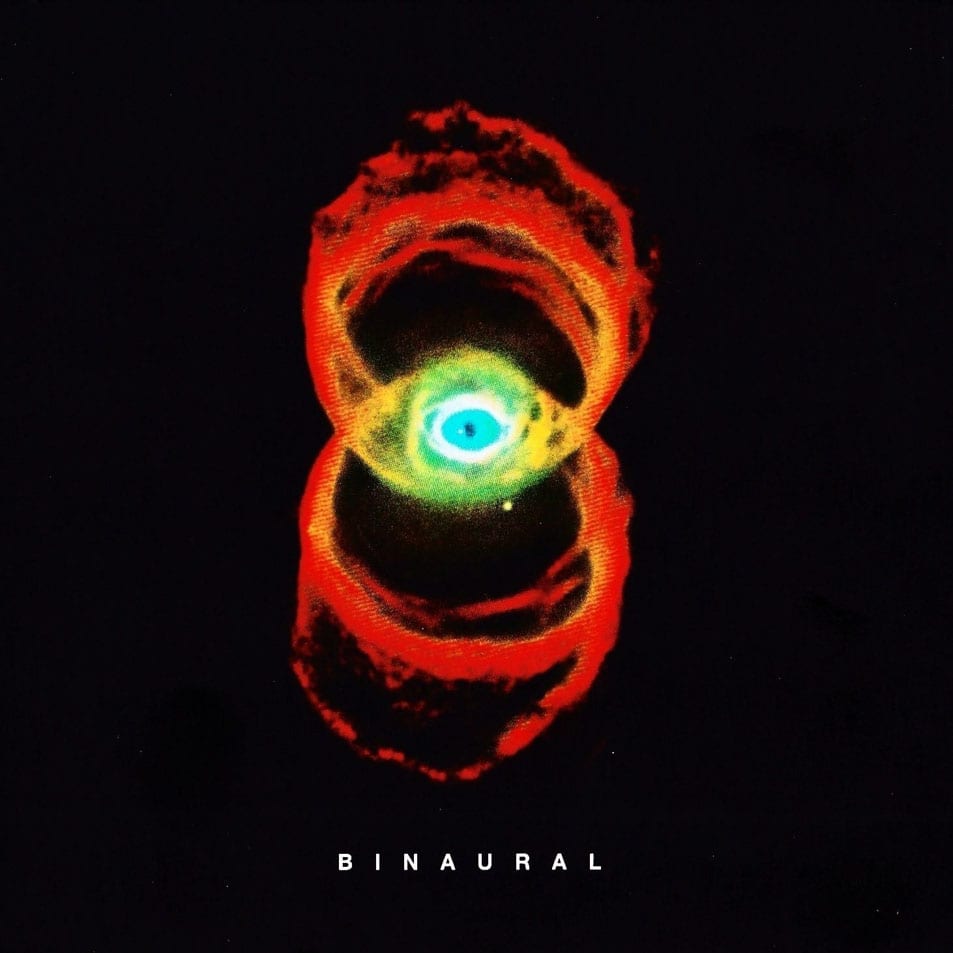 It has to be intentional that “Breakerfall” starts off just like a Who song, and I wouldn’t be surprised if I just never got over that enough to be comfortable with Binaural. Eddie Vedder also had writer’s block after the extensive touring for Yield, which seems to show in the fact that this album has trouble finding its own identity.
It has to be intentional that “Breakerfall” starts off just like a Who song, and I wouldn’t be surprised if I just never got over that enough to be comfortable with Binaural. Eddie Vedder also had writer’s block after the extensive touring for Yield, which seems to show in the fact that this album has trouble finding its own identity.
After the off-putting Who reference, the next few faster songs could’ve been either on No Code or Yield. There’s even a song—“Rival”—that feels like it’d be more at home a few years later on Riot Act. Because of these associations I made to other albums, Binaural feels like half an album jammed into a playlist from their other work.
The songs that really feel new—and at home here—are “Nothing As It Seems,” “Of The Girl,” “Sleight of Hand,” “Soon Forget,” and “Parting Ways.” That’s five out of 13 tracks that feel of a new piece. All the songs are extremely well put together, so it doesn’t have Backspacer’s issue of feeling like it needs a little more production to finish it; it just doesn’t feel like a single unit. To be sure you know this is a quality product despite itself, I recommend listening to the five tracks I listed above.
8. Pearl Jam (2006)
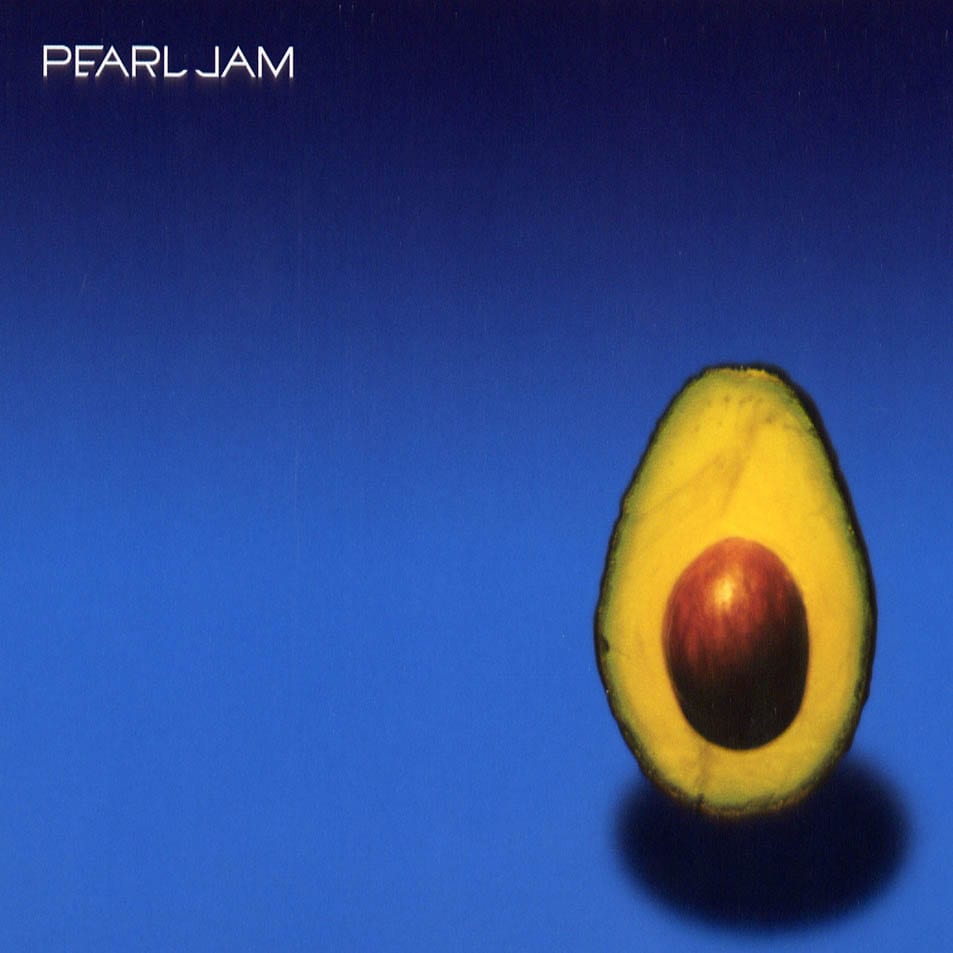 Pearl Jam is reacquainting with its rock side here, but not in quite the career retrospective way we’d eventually get in Lightning Bolt.
Pearl Jam is reacquainting with its rock side here, but not in quite the career retrospective way we’d eventually get in Lightning Bolt.
The first five songs (including “Worldwide Suicide” and “Severed Hand”) remind me of the Yield era, though chord structures would shift like a rock version of Riot Act. Which was interesting as the next track, “Parachutes,” was a quieter song made out of Beatles-style chord changes that would’ve fit in great on Riot Act.
Then I noticed a possible narrative coming to the front with “Gone,” a story song about a person struggling to get out from under his situation. “Wasted Reprise” is a coda to “Gone,” as well as a quiet version of the first track’s chorus. The moody almost prog-rock “Army Reserve” is where you go if you’re the character in “Gone.” Then “Come Back” is a ballad (organ and all) that reminds me of what would happen if Ten’s “Black” was a country ballad. I guess the Army Reserve wasn’t the answer?
The final track, “Inside Job” tells its story with a moodier prog-rock vibe, but its climax never quite explodes. The story realizes, then gets its answer, but doesn’t quite find catharsis. The album’s character ended up feeling a bit unfinished, which contributes to Pearl Jam feeling less memorable than the band’s other stuff.
Just don’t skip it because then you’d miss “Unemployable,” a catchy track with a circular chorus that regularly finds its way into my head.
7. Lightning Bolt (2013)
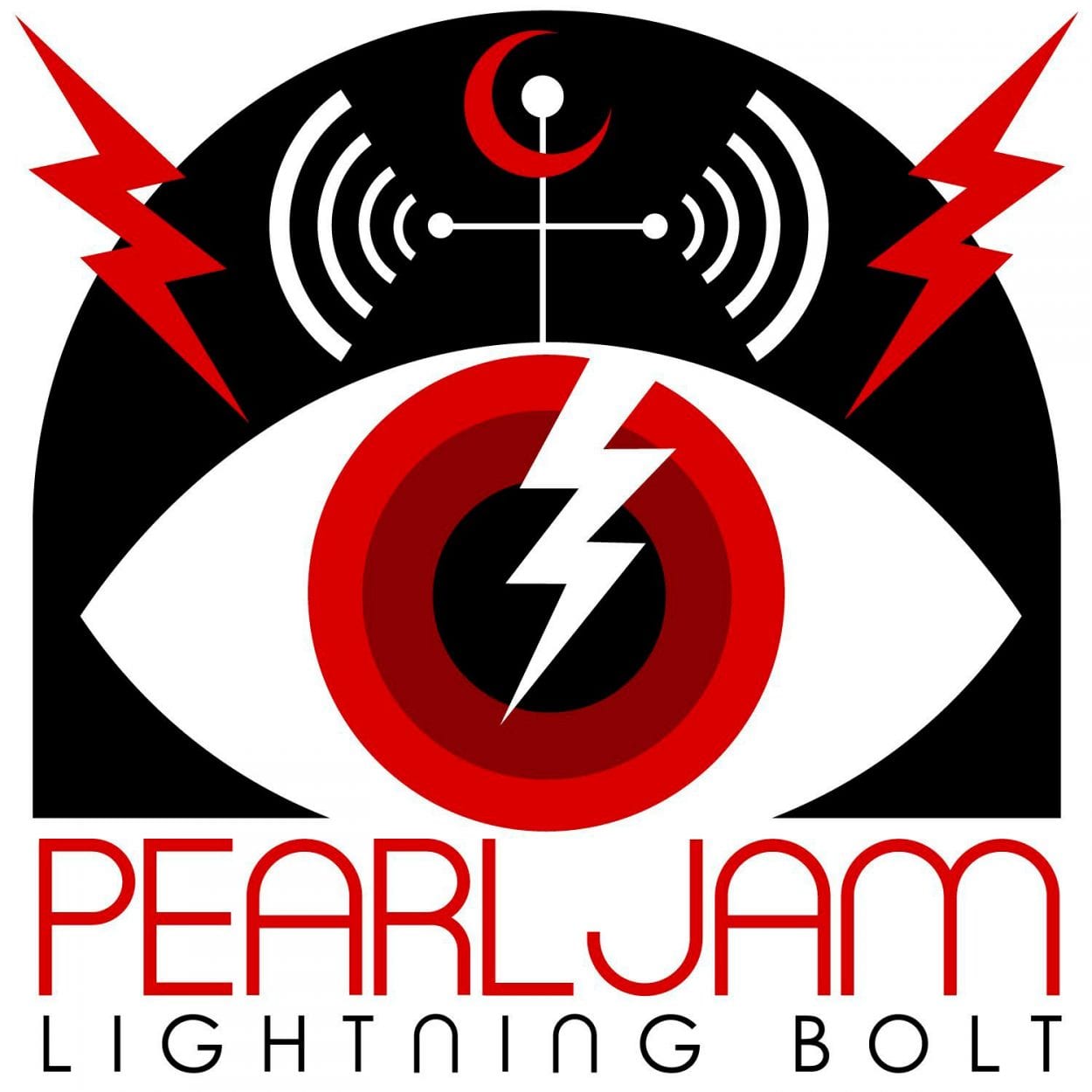 I’m into this album. Pearl Jam looks back all the way to the beginning of their catalog and wears their whole career before the album finishes. The opening track “Getaway,” for example, is half “World Wide Suicide” and half Vs. production. What does that instinctively tell me? Sign me up.
I’m into this album. Pearl Jam looks back all the way to the beginning of their catalog and wears their whole career before the album finishes. The opening track “Getaway,” for example, is half “World Wide Suicide” and half Vs. production. What does that instinctively tell me? Sign me up.
The album begins more intensely than any since Vitalogy, but then it ends with a boatload of ballads.
I think because of the strong beginning—and the singles I remembered—I give this album more points than it necessarily earned. I was ready to put it in front of No Code before I listened to it again, but with a fuller view of the album I notice things like how “Sirens” is basically a power ballad, or how “Future Days” would be a soaring Meatloaf tune if it weren’t for Vedder smartly staying in a lower register.
All of Lightning Bolt’s songs are competently built by a band who’d been touring arenas with their back catalog for decades, showing us what they’ve learned. There’s even Vedder’s solo ukulele stuff in the mix of influences.
What’s the track I want you to try most? The sparse, moody and intense “Pendulum.”
6. No Code (1996)
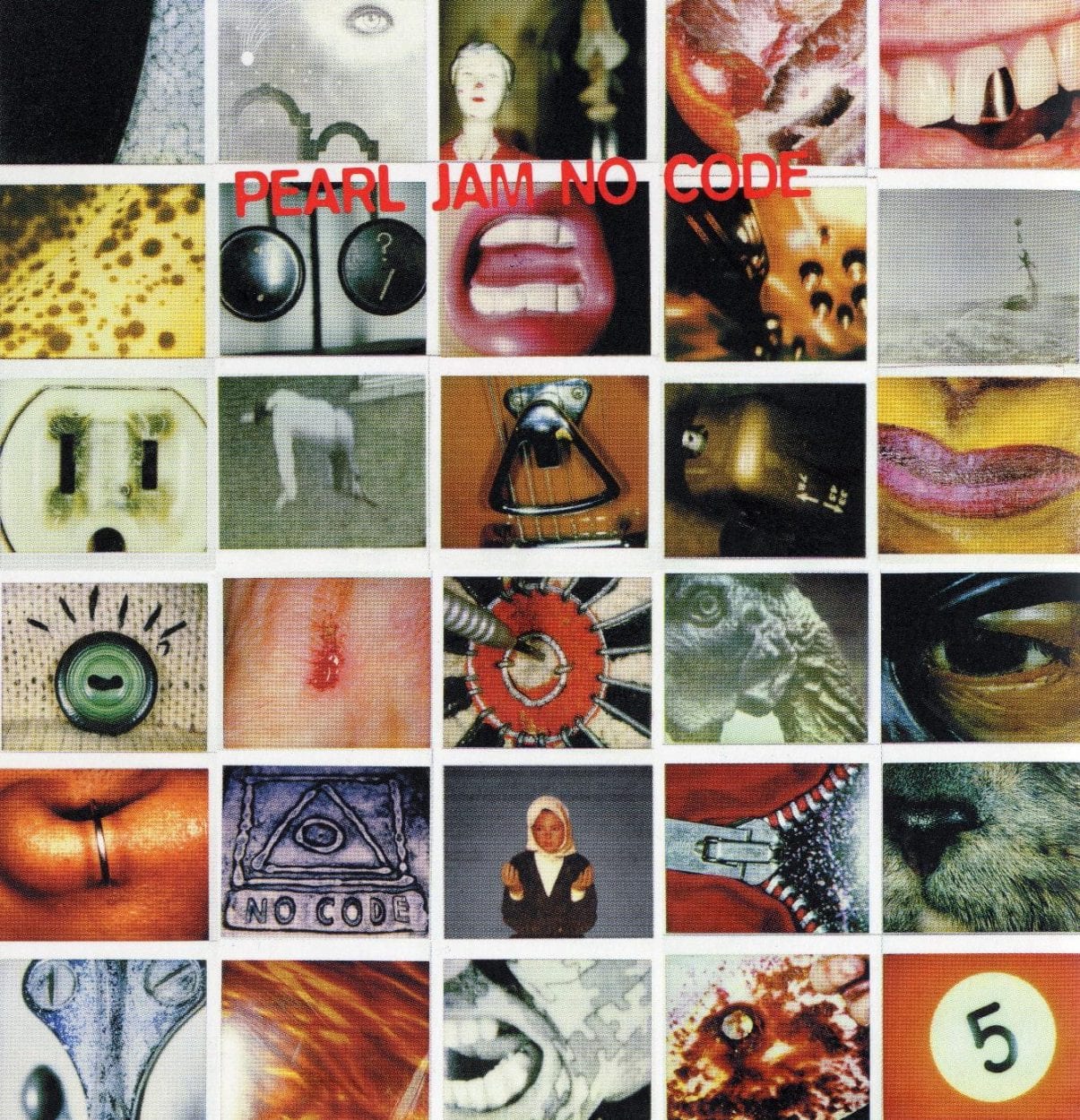 Even though this album fills its obligation to rock hard, what it seems to really want to be is an existential exploration looking for peace.
Even though this album fills its obligation to rock hard, what it seems to really want to be is an existential exploration looking for peace.
“Sometimes” is the mellowest and most tentative album opener Pearl Jam has. It’s peaceful and worried at once. Then “Hail, Hail” hits hard, and the album oscillates between these two extremes for the rest of its tracks.
“Habit,” “Mankind,” and “Lukin” inject manic screaming energy just when the album might be labelled as becoming too mellow. In the middle range we have “In My Tree,” “Red Mosquito,” and the Tom Petty-adjacent “Smile.”
Then there’s the more existential-leaning tracks. “Who You Are” seems like it came out of a drum circle while still having a full-band feel. The great ballad “Off He Goes” is a folk guitar version of the “Nothingman” formula. “Present Tense” is a lot like their first two albums’ closing tracks the way it adds instruments and intensity while Vedder starts low and quiet before increasing in octave and volume. “I’m Open” is a spoken word story about a man growing up, with choruses of simple drawn-out words in an almost mantra meditation style. Then “Around the Bend” is a peaceful song that almost gives me a country style closing-down-the-bar feeling, complete with piano.
If most other bands made No Code it would rank higher, but its constantly stretching tone shifts make it more akin to a second disk of Vitalogy rather than an album all its own. What a way to be overshadowed.
5. Riot Act (2002)
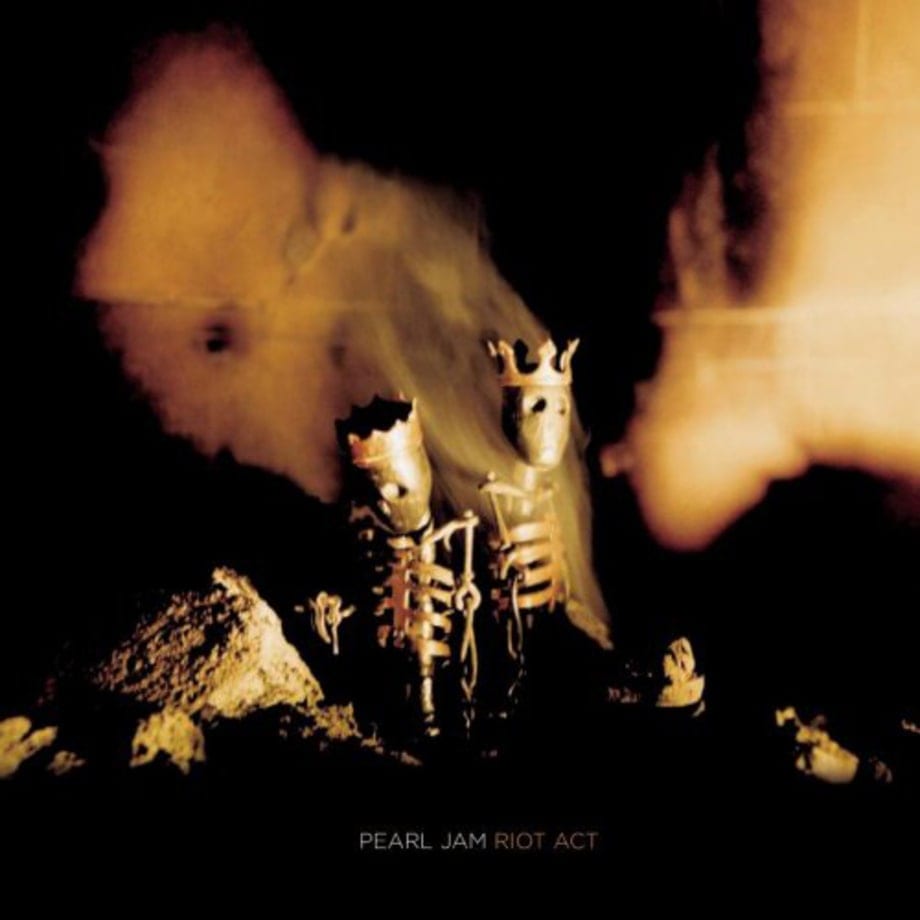 Riot Act is hands-down the best synthesis of Pearl Jam’s rock song construction and their ballad songwriting. The result is a balanced album that never gets too somber or too aggressive at any point. It feels like the darker side of their previous album Binaural matured and grew into one of their best albums. It may not be as radio-friendly as Pearl Jam’s more famous fare, but I’d go to bat for this album anytime.
Riot Act is hands-down the best synthesis of Pearl Jam’s rock song construction and their ballad songwriting. The result is a balanced album that never gets too somber or too aggressive at any point. It feels like the darker side of their previous album Binaural matured and grew into one of their best albums. It may not be as radio-friendly as Pearl Jam’s more famous fare, but I’d go to bat for this album anytime.
The band is using the same ethos of experimentation-plus-listenability as they did during Vitalogy, but benefits from being a) more mature and b) less under the lens of celebrity.
Also like their Vitalogy period—when the band was taking on Ticketmaster’s overpricing—the band is focused on another target: the George W. Bush administration. It adds to the focused feel of this album.
“Can’t Keep” is an intense but controlled song that leans into lyrics about promises you can’t keep. Then “Save You” is more energetic but not in that rocking-out way we’re used to. This version comes with a hammond organ, which is pleasantly included all over these songs.
Instead of the usual drastic album tone shifts, Riot Act smoothly transitions from the more intense opening tracks into two ballads in a row, “I Am Mine” and “Thumbing My Way.” Then guitar effects create a controlled intensity for “You Are” that implies heaviness even as the vocals are at the same level as the previous two songs. This transitions into the most traditionally Pearl Jam tracks yet—“Get Right” and “Green Disease.” Then “Help Help” leans back into the organ and eccentric verse delivery, along with heavier guitars on the chorus.
Overt Bush criticism is on display in the poetry-style “Bushleaguer.” “Half Full” almost has a blues feel but the chord changes are all Pearl Jam. Then there’s wordless a cappella for the minute-long “Arc.” Lastly, “All or None” begins its lyrics with “it’s a helpless situation.” The track’s a classic album-ender that built as it played like on their first couple albums.
This is a mature, focused album that’s worth the play-by-play I just gave you. Please give it a try if you haven’t.
4. Vitalogy (1994)
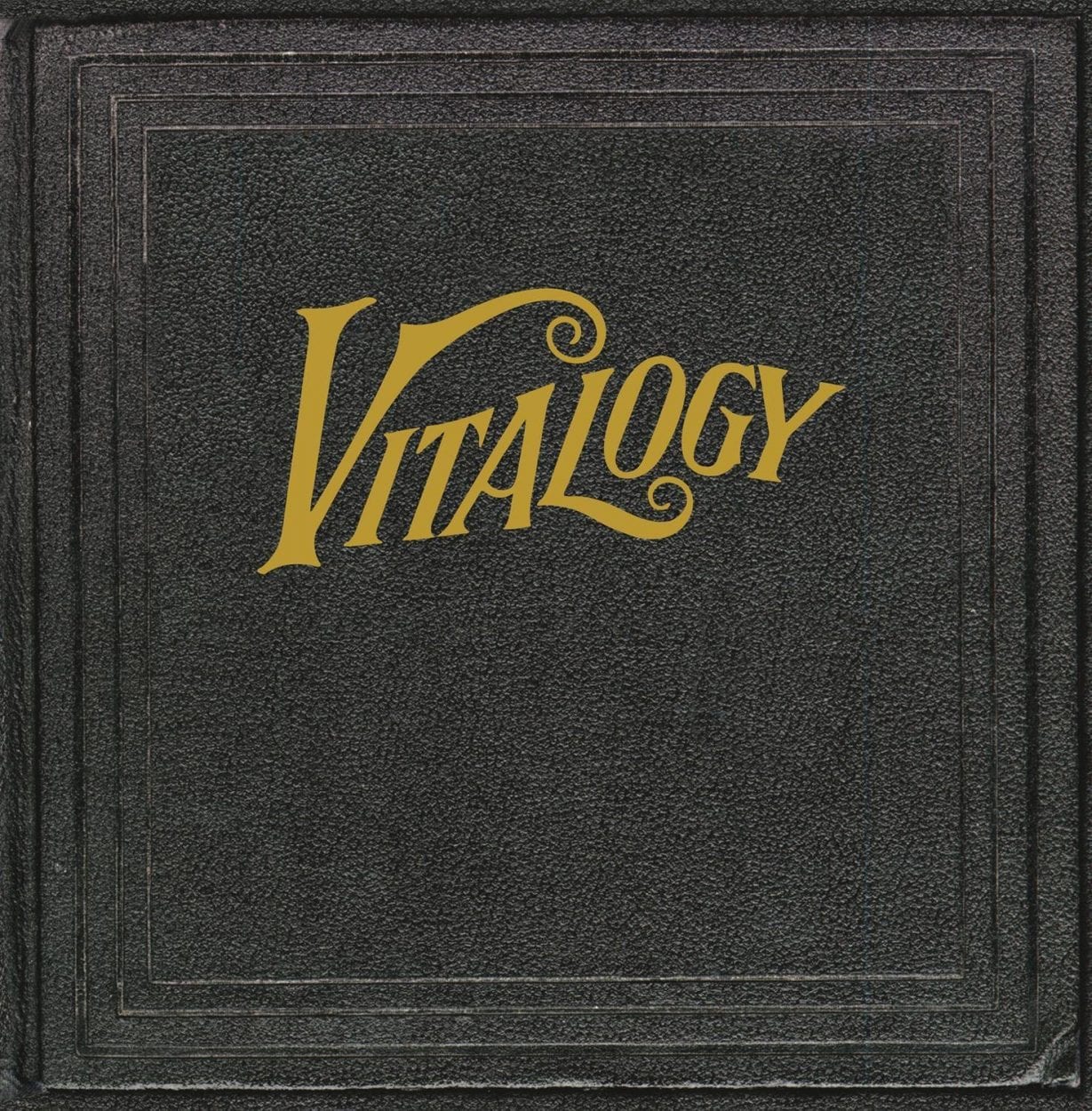 Eight songs—that’s over half of Vitalogy—made it to regular radio rotation when this album was released. Not even Lady Gaga’s omnipresent debut did something like that.
Eight songs—that’s over half of Vitalogy—made it to regular radio rotation when this album was released. Not even Lady Gaga’s omnipresent debut did something like that.
Only two songs—“Whipping” and “Satan’s Bed”—stayed on the album, and four tracks were more like interludes or soundscapes and were unable to make radio. That’s a lot of known songs here for it to be Pearl Jam’s most experimental album, yet fact is fact.
The album starts with instruments warming up chaotically, just like they did in their previous album, Vs. It then shifts into “Last Exit,” followed by “Spin the Black Circle,” “Not For You,” and “Tremor Christ.”
(I still wish to this day that “Not For You” was the live version Chicago’s Q101 played for months before the album’s release, but what can you do.)
The band didn’t want to record “Better Man” because it’s a blatant pop hit, but you can’t help but love it. I’m curious if this, coupled with obviously radio-friendly hits “Corduroy” and “Nothingman,” contributed to the hard-to-pin-down feeling of this otherwise experimental album.
The last radio song “Immortality” has a strong hand on the power but a light touch on the volume, which made for a great tone. It could’ve been a great album-ender if Vitalogy wasn’t leaning into its eccentricity.
The blatantly experimental tracks are “Pry, To”—a quick musical interlude about “P-R-I-V-A-C-Y,” a commodity the band was very much desiring after an intense time under the fame magnifying lens—“Bugs”—a beatnik style story about bugs taking over this guy’s space, using only accordion, plucked bass notes and backup vocals—“Aye Davanita”—a lyrics-free vamp over two chords which felt a bit like a meditation that No Code would later continue—and the final track “Hey Foxymophandlemama, That’s Me,” which is an eccentric soundscape anyone can call this band’s “Revolution 9.” Tracks like these that make me happily describe Vitalogy as Vs.’ quirky cousin.
3. Yield (1998)
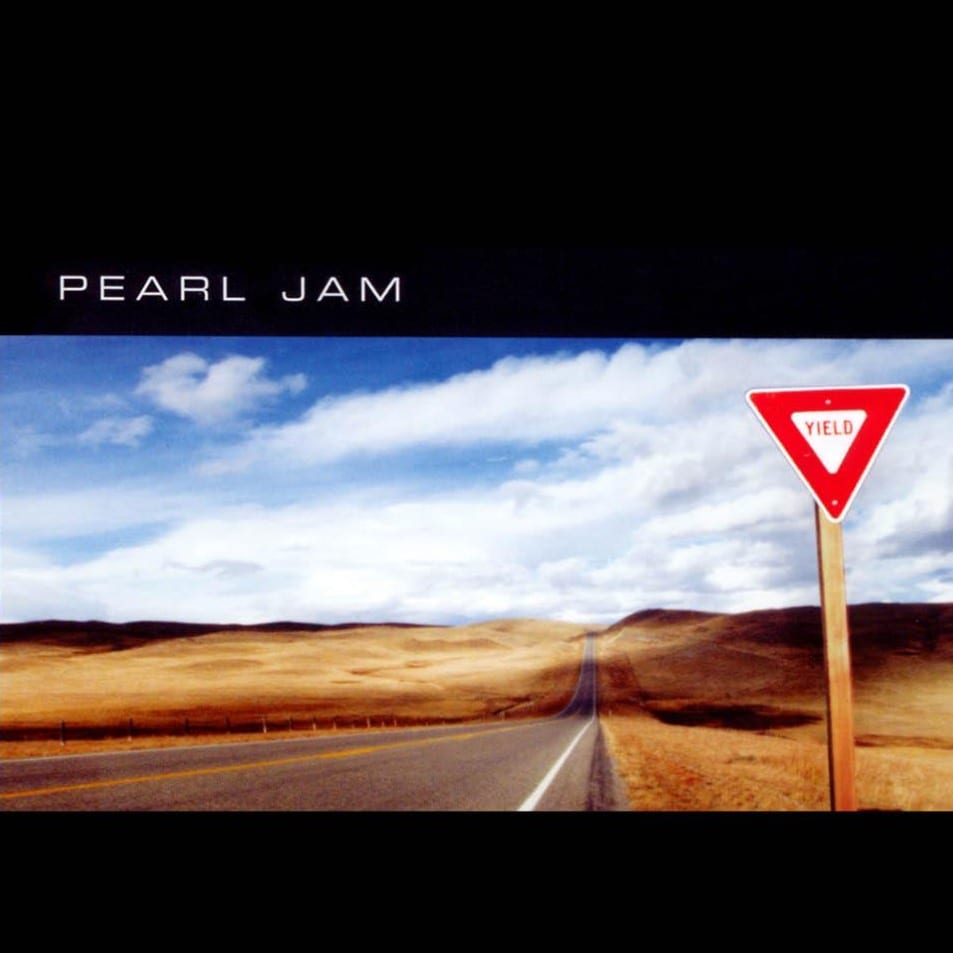 In 1997, the feeling was real that maybe Pearl Jam was getting a bit stale and their reign was ending. “Brain of J” begins immediately to contradict this sentiment, as if to say “we are not done here.”
In 1997, the feeling was real that maybe Pearl Jam was getting a bit stale and their reign was ending. “Brain of J” begins immediately to contradict this sentiment, as if to say “we are not done here.”
This album is Pearl Jam using everything they learned about song writing up to then to great effect. It’s controlled raucous energy and satisfying to the ears.
“Given to Fly” is Pearl Jam perfecting the formula for their version of a soaring ballad. This is what their “Better Man” style of songwriting evolved into, and it is good.
I liked “Wishlist” even better at the time because it’s the same formula but done more circularly. It ends up leaving less to the song structure but more to the vibe. You think we’re going to get that kind of mellow again with “Pilate” but it’s got a punchy chorus, which sets up well the feisty and eccentric “Do The Evolution,” which still makes me smile quite a bit. It’s got strength, momentum, and just the right amount of silliness to be its own kind of classic.
“Untitled,” which is essentially a percussion solo with kettle drums, comes next. It’s definitely an odd one but it’s only a minute long. Is it an epilogue after they do the evolution?
The album starts its tone cycle over again with “MFC” which is more like the beginning of the album, then soon “In Hiding” is back to “Wishlist” and “Given to Fly” territory.
“Push Me Pull Me” is in their eccentric wheelhouse of songs like “Bugs” but much more melodic. Then they end on “All Those Yesterdays,” a song reminiscent of the Beatles in more ways than just referencing “Yesterday.” There’s trumpets, and a fade out chorus that seem to have elements from Sgt. Pepper’s. It would have been an interesting way for the band to end an album, but they tacked on a hidden track that would’ve confused the tone more had there not been silence before it started. It’s a klezmer-scale instrumental jam more fitting for a Cake album.
If I had to guess why the band went this direction with this album’s final thought, I’d say it’s telling us not to get too comfortable. There’s still plenty of ways Pearl Jam can surprise you.
2. Ten (1991)
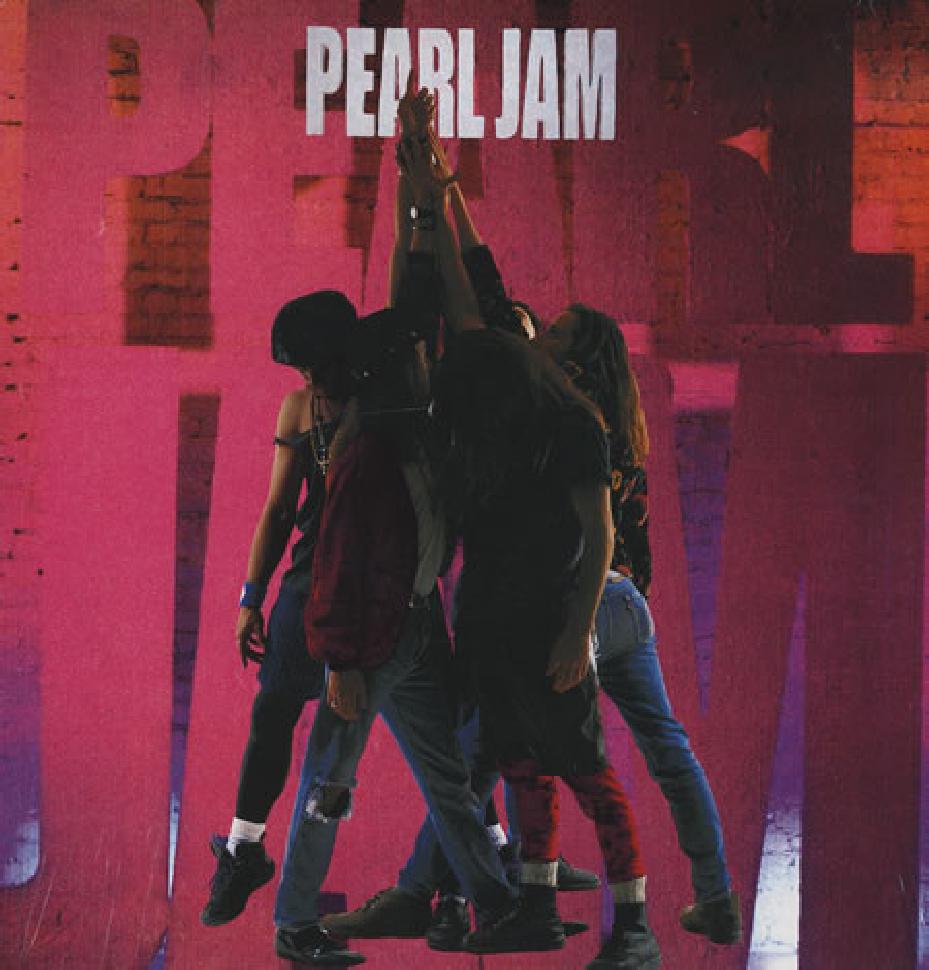
The first six tracks—more than the first half of the album—are a murderer’s row of songs. I don’t have to say a thing about “Once,” “Even Flow,” “Alive,” “Why Go,” “Black,” or “Jeremy.” This is an album of wrecking balls, one after another.
This is an undeniable album made of pure power. Even the quieter tracks like “Oceans” and “Garden” are hammers. And “Release” is a steamroller going over you slowly as it builds. There is no way to say Ten is anything less than an all-time classic.
How in the world is this not Number 1 on the list? Ten was made by untried talent and a studio. These are superstar productions, and created by a band who knew they were great, but Pearl Jam did not have the clout to spread out as much as they did in future albums or reveal their eccentricities. This ended up being a highly successful proof of concept.
Ten ends on the same instrumental vamp that the album fades in with, adding in Vedder’s wordless notes and/or chanting. This could be seen as the band trying to put in some of that personality, but instead it works like a cool-down as well as a way to go back around to the front of the album in a loop.
This is a band that needs to prove something, and they certainly succeed: everyone knows Pearl Jam’s talent is now undeniable.
Next album, Pearl Jam also had something to prove—that they can follow up a masterpiece and prove they have something worth staying around for—but now they had power being the band who kicked in the door when they made Ten. Because of Ten, they were allowed to be themselves.
1. Vs. (1993)
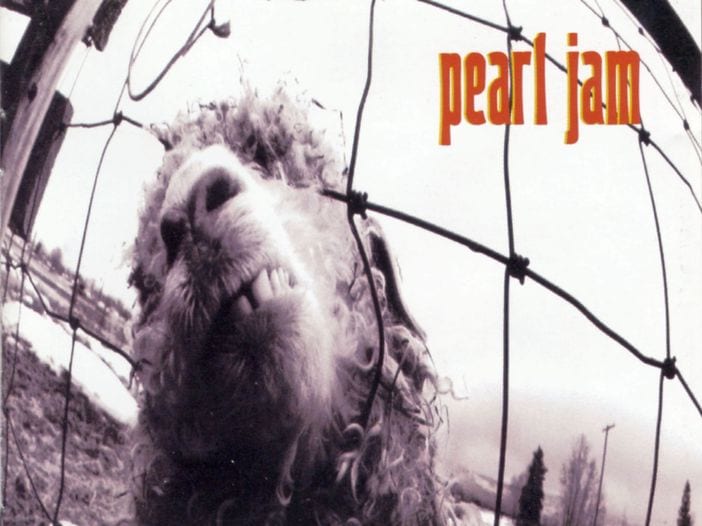 After the massive success of Ten, Pearl Jam was able to reveal their personality as well as their craftsmanship skills. The result is my all-time favorite Pearl Jam album, Vs.
After the massive success of Ten, Pearl Jam was able to reveal their personality as well as their craftsmanship skills. The result is my all-time favorite Pearl Jam album, Vs.
Find me a better opening one-two punch than “Go”—my all-time favorite opening track—and “Animal.” I dare you. The best you’ll get is a tie for first. The intensity of those two songs is a message: Pearl Jam’s leash was off and they wanted everyone to know it.
Then they have the audacity to leave that momentum on the table and shift into their first quieter song, “Daughter.” This says plain as day “we’re doing what we want here.” Pearl Jam was able to write any kind of song on any kind of subject matter, and it could work. And with this album, now they knew that. The confidence is sublime.
“Glorified G,” “Dissident,” “W.M.A,” “Blood,” and “Leash” come from a similar range of power yet all different in vibe. The intensity and bass groove of “W.M.A.” makes it my favorite of the bunch.
“Rearviewmirror” seems like it’ll stay in that same range as well, but it shifts its tone in its back half like “Daughter” does and it starts creating power in a new gear all together.
“Rats” is a funky rock version of what will become songs like “Bugs” on future albums. But until then, this one comes with a standard rock chorus.
“Elderly Woman Behind the Counter in a Small Town” is a straightforward ballad yet even it packs power fueled by its subject matter of nostalgia and lost potential. That repeated chorus of “hearts and thoughts they fade, fade away” can kill you if you’re in the right mood.
Then there’s the album closer, “Indifference.” It builds in vocal range, subject matter, and added instruments, yet it still leaves room for the guitar to have a voice. It builds and ebbs. All while taking on existential questions about how much of an effect anything we do has on the world, or on our own pain. It’ll get you thinking and feeling as it sucks you into its vibe. A great way to let us off at the end of the ride, while leaving us with so much.
It’s also a microcosm to explain what I’ve just gone through, mainlining the catalog of one of the best bands of all time.

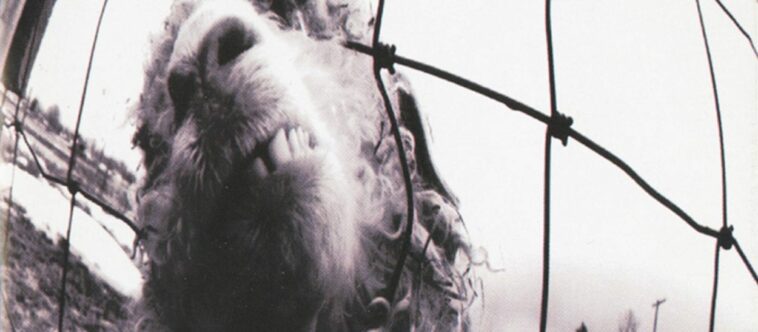
Great write up. Thanks for that. Like a lot of people, Ten is part of the soundtrack of my teenage years. Vitalogy I believe helped shape the adult I would become. I matured with that album, much like the band itself. Somehow, Vs released and I barely noticed it. I never really took to the album. I’m going to give it a cover to cover listen today. Seems like anytime a new PJ album releases it takes me years to actually get into it except for Lighting Bolt. I went to a couple PJ concerts when that came out and I bought it the day it released. Anyway, I enjoyed your list and thanks for sharing.
Great write up. Thanks for that. Like a lot of people, Ten is part of the soundtrack of my teenage years. Vitalogy I believe helped shape the adult I would become. I matured with that album, much like the band itself. Somehow, Vs released and I barely noticed it. I never really took to the album. I’m going to give it a cover to cover listen today. Seems like anytime a new PJ album releases it takes me years to actually get into it except for Lighting Bolt. I went to a couple PJ concerts when that came out and I bought it the day it released. Anyway, I enjoyed your list and thanks for sharing.